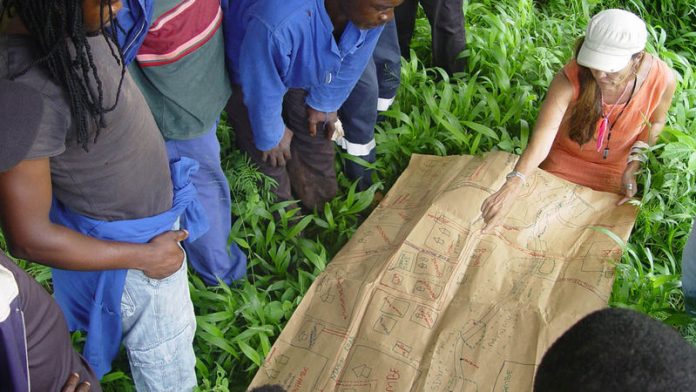Draft white paper on sustaining the country’s biodiversity is a bold step but lacks details

As published in Mail and Guardian on 19 September 2022
Biodiversity loss continues unabated globally. As many as a million species face extinction within decades unless urgent action arrests the runaway drivers of this loss. It is, therefore, extremely encouraging that South Africa has released a ground-breaking new policy which, if implemented, has the capacity to reshape the conservation and ecologically sustainable use of our country’s biodiversity.
The Draft White Paper on the Conservation and Sustainable Use of South Africa’s Biodiversity, which was published for comment on 8 July, is founded on a set of guiding principles and contends that nature and ecological systems have intrinsic value and must be conserved, even if it does not directly or indirectly benefit humans. This represents a significant shift away from conceptions of biodiversity as having purely instrumental value to people.
The white paper envisions “a prosperous nation, living in harmony with nature, where biodiversity is conserved for present and future generations and secures equitable livelihoods and improved human well-being.” It is grounded in a set of definitions and policy objectives categorised under eight goals that seek to conserve South Africa’s biodiversity, maintain ecological integrity and ensure that ecosystem services provide transformative socio-economic development through justifiable, responsible and ecologically sustainable use.
What sets the paper apart from a 1997 white paper of a similar title (which never made it past its draft form) is its emphasis on transformation. The paper seeks to address the shortcomings of previous conservation models, which, as it correctly identifies, were founded on the historical colonial practices — entrenched by apartheid — of over-exploitation of nature and the exclusion of the indigenous people and local communities from conservation (the so-called “fences and fines” approach to conservation). The paper embraces the collective participation and beneficiation of all people, and recognises the right of indigenous communities to full participation in the biodiversity sector.
This aspirational policy goes further in entrenching the values of ubuntu and the promotion of harmonious relations based on respect for nature for nature’s sake, and economic and ecological justice for all. It recognises that biodiversity is required for human existence and that we all have a stake in its conservation. It embraces African ethics of the inter-relatedness of people and nature and provides the policy framework within which this relationship may be reconceptualised.
In relation to animals, the paper explicitly recognises that animals are capable of suffering and experiencing pain, and that sentience requires a higher level of consideration of the impact of actions on the well-being of animals. This recognition has significant legal implications for the ecologically sustainable use of animals, which the definition in the paper recognises must be humane and not compromise their well-being.
Despite its aspirational intentions, several issues plague the paper which, if not remedied, may undermine its effective implementation. These deficiencies were raised in comments submitted by the Biodiversity Law Centre and Natural Justice on 8 September.
Firstly, the issue of resources. One of the key concerns with the white paper is the absence of detail regarding how, both in terms of human and financial resources, it is going to be implemented. While the government has proposed truly forward-thinking and progressive policy goals and objectives that embrace the transformation of the sector, it is concerning that insufficient attention has been given in the paper how it is proposed to be implemented from a resources perspective.
Secondly, it fails to address how potential conflicts between policy objectives and mandates of different state departments will be resolved. In relation to the role of other national departments in implementing the paper, of crucial importance is how they cooperate with one another and develop sectoral-specific plans and budgets to reflect how biodiversity considerations will be mainstreamed into the activities of their respective departments.
With the department of mineral resources and energy seeking to forge ahead with an agenda to develop oil and gas (we saw the Draft Fracking Regulations and Minimum Requirements for Fracking Applications published for comment) one wonders how activities with potentially deleterious impacts on biodiversity may be reconciled with the ambitious policy objectives of the white paper. Clearer articulation of where the paper ranks in relation to other policies should be included.
Thirdly, while the paper goes to some lengths in describing South Africa’s biodiversity, it fails to place this within the broader international policy context. Specifically, the Intergovernmental Science Policy Platform on Biodiversity and Ecosystem Services and the Global Biodiversity Outlook 5, both of which emphasise the fundamental importance of nature to human existence and good quality of life, and that humanity stands at a crossroads with regard to the legacy it leaves to future generations.
Once adopted, the paper will guide a revision of existing laws and (potentially) the introduction of new legislation. This is certainly an ambitious task, and again begs the question of where resources, both human and financial, will be sourced.
The paper recognises with concern that living systems in South Africa are declining at a rapid rate, with 14% of taxa (groups of species) threatened with extinction and almost half of all ecosystem types categorised as threatened. It notes further that 99% of estuarine areas and 88% of wetland areas are threatened and that “across the main ecosystems, estuaries and inland wetlands are the least protected ecosystem types, with less than 2% of their extent in the well-protected category”.
With drivers of biodiversity loss continuing unabated, the successful adoption and implementation of the white paper become imperative and urgent. As the paper says, this will require introspection, reflection and courageous discussions among all stakeholders, which should be driven by the biodiversity sector at all levels. To do this, strong partnerships will need to be established between government agencies, the NGO sector, community-based organisations, women’s groupings, holders of traditional knowledge, the private sector, the scientific community and private individuals.